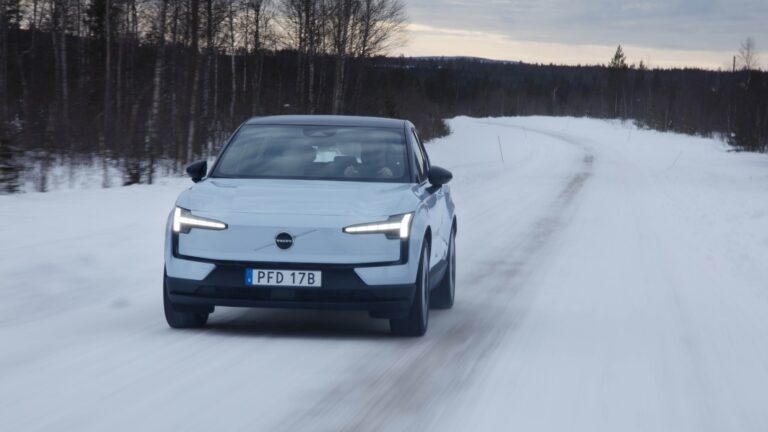GULLTRÄSK, Sweden — The irony of testing the new 2025 Volvo EX30 on a frozen lake mere miles south of the Arctic Circle is about as strong as the nonstop snow whipping my face upon exiting the sumptuously warm haven that is this little crossover’s colorful interior. Chances are, very few EX30 buyers in the United States will find themselves in such extreme conditions that studded winter tires become a non-negotiable item. But hey, when the opportunity arises to put what is arguably one of the most exciting new EVs introduced in the past year through the sort of ice driving Volvo does while testing on the company’s Swedish home turf, the only reasonable answer is, “Yes, please.”
Why’s the EX30 so exciting? There are 36,245 reasons why. Most new EVs are inarguably expensive propositions, but with a starting (and startling) price of just $36,245, the EX30 aims to buck that trend. Not only is it inexpensive in comparison to the vast majority of EVs on sale today, but on paper and in person, it looks like a car one would expect to cost significantly more. The EX30’s performance figures are a huge contributor to this disconnect. Its single-motor, rear-drive model produces 268 horsepower and 253 pound-feet of torque (0-60 mph in 5.1 seconds), while the dual-motor AWD model amps that up to a rocking 422 horsepower and 400 pound-feet of torque (0-60 in 3.4 seconds). The performance party trick here is that the EX30 is lightweight for an EV, coming in at just 4,140 pounds with AWD or 3,858 pounds with RWD – that comes in handy when you’re on ice.
The Björnträsk Ice Track just outside the hamlet of Gullträsk is not easy to get to. First, one must find your way to the Baltic-adjacent town of Luleå, Sweden. It’s one of the most bustling towns in the remote landscape that is northern Scandinavia, and it just so happens to host a small airport, which sees about nine arriving flights per day. Luleå is far enough north that it’s covered in a permanent blanket of snow from November until spring hits, and the snow coverage you see on the coast only increases the further one drives inland.
Unlike most winter-stricken American states, Sweden doesn’t use salt to help clear snow and ice from its roads. Instead, gravel is used in abundance, but frankly, it’s not much help when snow consistently covers it right back up. What you’re left with is hard-packed snow on all the roads, making studded tires – that you hear everywhere while walking around town – compulsory and something you don’t want to argue about. If your average American driver were to be airdropped into this reality, traffic everywhere would be miserably slow and an absolute nightmare. But not the Swedes! Thanks to the biting grip of studs and massive rally lights affixed to nearly every vehicle, neither the snow nor the everlasting darkness of winter – close to 24 hours a day at winter’s peak up here – is slowing these folks down. Good luck keeping up with any of the locals on all of the meandering country roads, because even if you try, you’re probably going to lose. And that loss is likely going to be you and your car in a snowy embankment. (Not that Autoblog has any experience with driving Volvos into Luleå’s snowy embankments.)
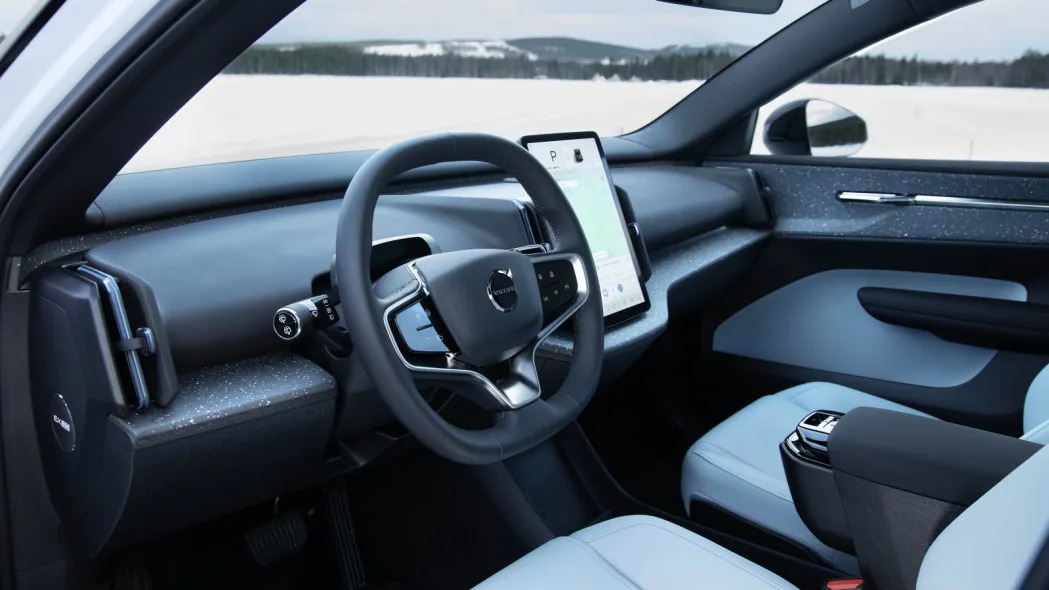
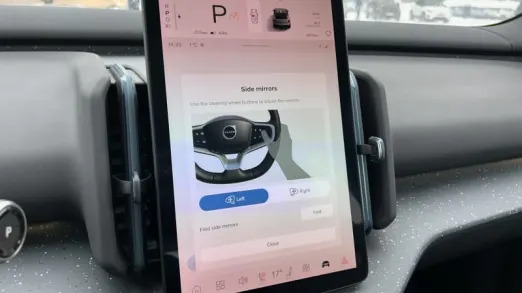
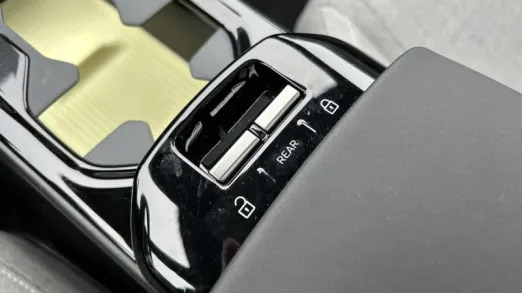
Getting my bearings in the EX30 while also trying to navigate this foreign, winter landscape is a less-than-straightforward task. One of its biggest cost-saving measures is the elimination of buttons and switches in the cabin. Volvo hasn’t gone full-Tesla yet, but the EX30 is nearly there with no instrument cluster or head-up display to speak of. The mirrors are adjusted via steering wheel buttons and the quick-to-react, portrait-oriented 12.3-inch touchscreen. Its headlight controls are also found within said screen, as are climate, heated seat and heated steering wheel controls. Even the power seat adjustment has been simplified by just using one giant toggle on the seat for all movements instead of separate pieces for the back and bottom. And last but not least, take a gander at the window switches, of which there are only two positioned in the center armrest. You press a nearby “Rear” button should you want those same switches to control the rear windows instead of the fronts, eliminating another two switches from the interior.
Tesla’s success tells us this reduction in functionality and centralization of controls – at least when paired with excellent powertrain performance as the EX30 is – into a single screen still sells, but it’s not going to be for everybody. Mindless tasks in current Volvos such as opening the glovebox or dropping the rear windows now require you to delve into a screen or press a touch-haptic button. These sorts of design decisions are what allow Volvo to price the EX30 as it does, and there’s no doubt that it’s a worse experience for the end user. That said, at least the interior styling doesn’t follow Tesla into the world of dreary minimalism. Its colorful and cheerful trim options – or “Rooms,” as Volvo refers to them – give it loads of traditional Swedish personality, and the recycled plastic materials usage is a pleasant, green touch without coming off as cheap or offensive.
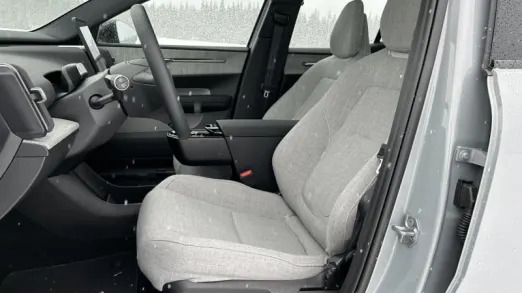

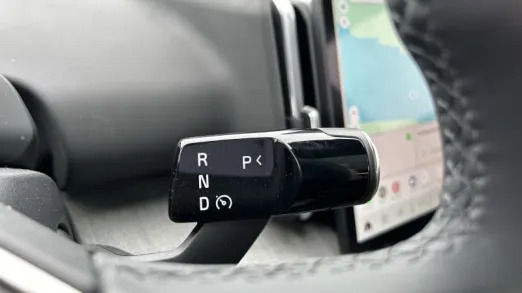
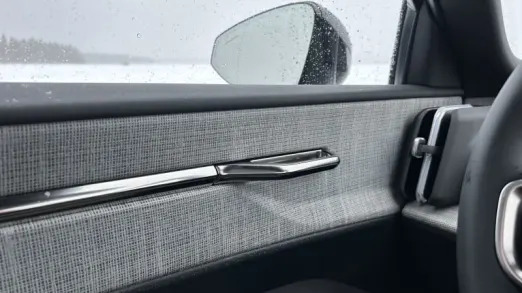
I flick the new column shifter that also doubles as a cruise control activation switch – no Orrefors crystal here – down into “Drive,” and off I go in the quick-but-not-alarmingly-so RWD version. Despite the studded tires, the EX30 is quiet and refined enough inside to earn the Volvo badge. The snowy, forested roads twist and meander, presenting occasional dips that challenge this little car’s suspension. Its long wheelbase is a real help to make such a short car ride like a larger one, though the big wheels Volvo fits (19s and 20s on these test cars) still result in firm impacts over the rougher country roads.
The snow’s been coming down in blankets throughout the whole drive – the weather report said at least 4 inches would fall through the afternoon – but I finally arrive at the frozen lake with just over 60% charge remaining after starting the morning at 95%. Official EPA figures aren’t out yet, but Volvo estimates its single-motor EX30 will go about 275 miles with a full charge on its 69-kilowatt-hour battery pack. That number is compromised in Sweden’s mid-20-degree weather, though, as 64 miles of driving consumed about 30% of the available energy, equaling out to a total range in the 210-220-mile ballpark in these winter conditions. Given the EX30’s price, I’m going to call that a win. Sadly, I didn’t get a chance to charge the EX30 in these cold temperatures, but Volvo says it can DC fast charge at speeds up to 153 kW, resulting in a charge from 10% to 80% taking 27 minutes.
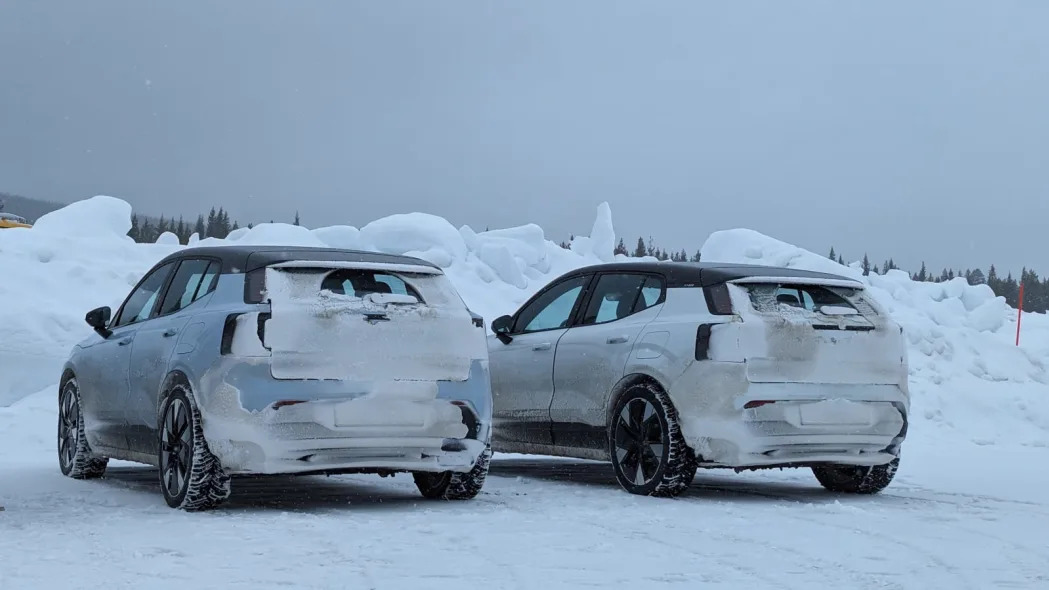
I step out of the EX30 at the frozen lake that is barely visible through the snow at this point. To further emphasize said visibility levels, at least two people went on to drive their EX30s into tall snow banks … and they weren’t even on the track yet. The rear of my test car is completely shrouded in a layer of snow from all the powder I just kicked up over the last hour and a half (in case you were wondering, that’s why we often can’t see the rear end of cars doing extreme winter testing in spy shots). But now it’s time to switch to freshly charged AWD and RWD EX30s for the main event: Ice driving!
Björnträsk Ice Track – with ice measuring about 3 feet thick at this time of year – consists of 75 turns with nary a break in between any of them. The best way to attack it is with a firm and confident grace. Trust the studs in the Michelin X-Ice North4 tires Volvo has fitted to all its EX30s, and don’t overdrive the car.
I start with the dual-motor AWD EX30 and toss it into “Performance AWD” mode. This locks the car into AWD, as it’s otherwise programmed to drive around in RWD mode to prioritize efficiency until you either require more traction or demand greater acceleration via your right foot. Even when you lock it into AWD, the power distribution is like that of a rear-drive-based AWD vehicle thanks to the rear motor producing 268 horses and the front capable of 154. As you’d expect, this makes the car a bit tail-happy, which is precisely what you want when the goal is scything through an ice track as quickly as possible.
It takes a couple of acclimation laps, but soon enough, I’m giggling to myself and throwing the EX30 around this ice track like a little rag doll. Inducing turn-in for each corner is as easy as putting in some forward-thinking steering lock and stabbing the brakes at the right moment. The EX30’s low-mounted battery pack gives it a lovely, even weight distribution, so you’re not fighting either end of the car or compensating for an engine hanging out in front of the axle. When you do step into the brakes, the EX30’s suspension doesn’t let it crash forward too hard or otherwise feel out of sorts. And then as soon as you have the nose and tail pointed the direction you want it to, it’s time to feed in the power. The AWD EX30 jumps forward like an excited rabbit mid-corner, but since the ice track is almost never straight, your time spent flat-out is inevitably cut short by the next turn going in the opposite direction. This back-and-forth nature of the course lets you string together drifts, going from left to right and generally feeling like a Formula Drift champion.
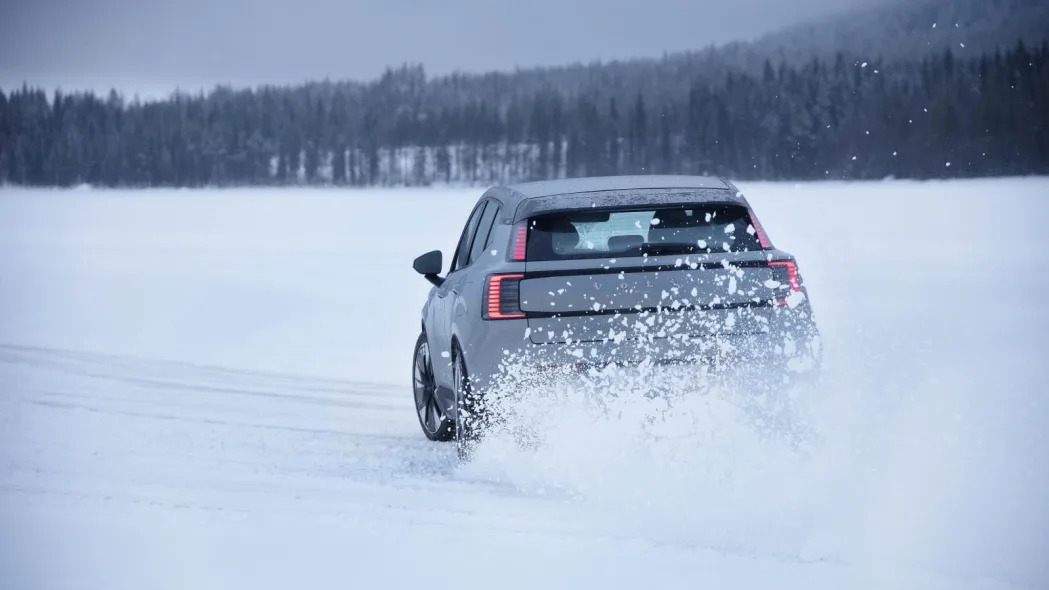
The EX30’s squircle of a steering wheel has a very small diameter with a soft wrapping and a rim of medium thickness – in other words, it’s damn-near perfect for this sort of driving. Steering effort itself is light even in the “Firm” mode, and it’s essentially effortless in “Light” – I preferred to keep it in Firm to offer up the most resistance and artificial “feel” to control the drifts. Smashing the throttle and feeling the studs dig in on acceleration or heavy braking is the kind of fun that’ll have you never wanting to leave a winter wonderland like this one.
Unlike the dual-motor EX30 that you can essentially drive like a ham-fisted fool by relying on the front traction to dig you out of and through corners, the RWD EX30 will leave you bogged down and helplessly stabbing the throttle wishing for it to mush onward. Overcook it and go too deep into one bend, and the next one is irreparably compromised as you attempt to gain back lost momentum. Some of this can be blamed on the fact that Volvo doesn’t allow you to fully turn off stability control. The switch in the car technically says “ESC Off,” but Volvo engineers tell us it can’t be fully defeated, and while you may never notice as much on dry pavement, sliding on ice makes it abundantly clear that ESC is still very much in the room. To demonstrate this, I got to go for a quick lap in the larger EX40 (née XC40 Recharge) that doesn’t let you loosen the ESC reins even a little bit. It was an enormously frustrating way to drive around a frozen lake, plus the vehicle itself is larger, feels far heavier and is therefore considerably less agile and fun to drive than the EX30 is.
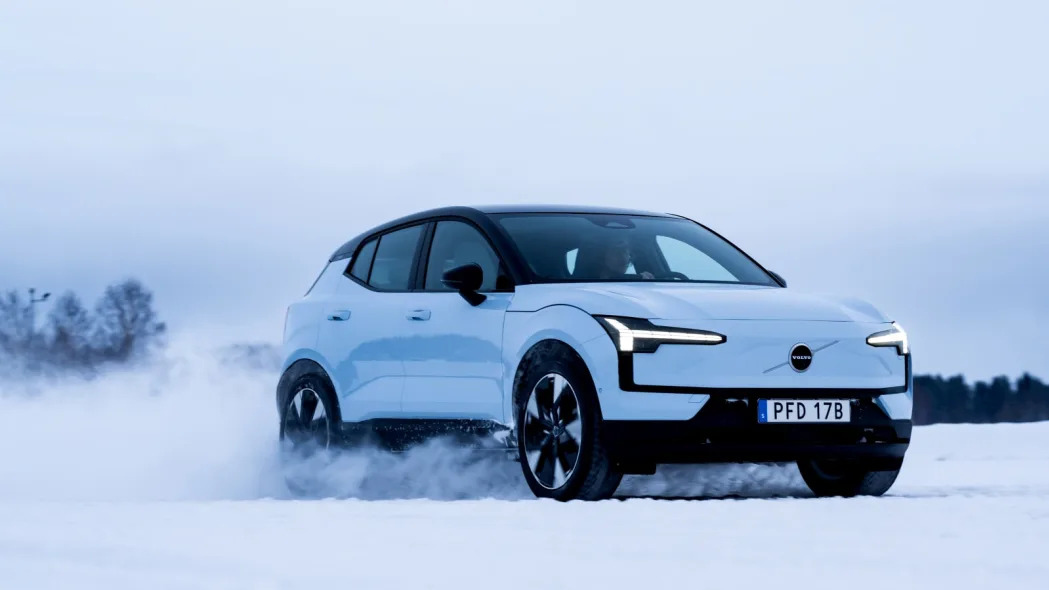
To keep momentum going the direction you want in the RWD EX30, it’s of paramount importance to get your braking done correctly and in a timely fashion. It’s just as important to be all the smoother with every input from steering to throttle as you arc through a corner and into the next one. Frankly, getting it right is infinitely more rewarding than hot-footing it in the AWD version. There’s the added benefit of the front end feeling noticeably lighter in the rear-drive EX30, too, lending the car that much more agility as you pitch it forward on the brakes. Engineers tell us you wouldn’t notice much of a difference on paved roads, though it should be said we found the RWD EX30 to be even more engaging than the AWD one on paved mountain passes during the first drive.
Will any of this ice driving apply to your daily commute in an EX30? Almost certainly not. But it’s a testament to the effort Volvo put into the EX30 and its pursuit to make driving a small, budget EV fun. A car’s handling characteristics are exaggerated to their greatest degree when put on low-mu surfaces, and the EX30, with its instantaneous and strong throttle response, quick steering rack and light curb weight, has a recipe for success in this sort of environment. This cute, little EV couldn’t come soon enough, and when it does, make sure you slap some winter tires on and find some snow – I can assure you a good time will be had.
Related video:


